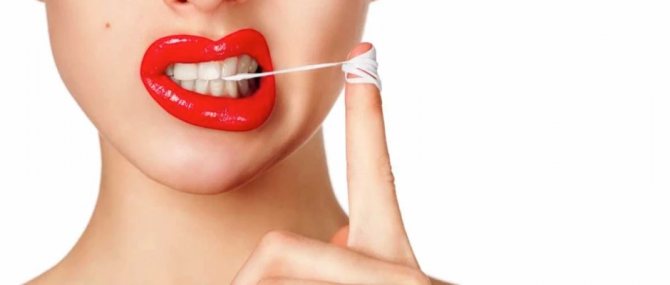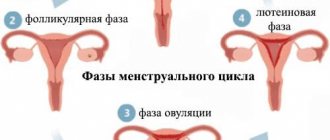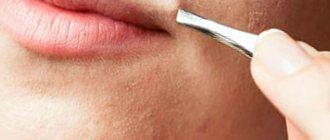Incredible facts
As a child, you probably often heard “Don’t swallow gum!”
Usually this phrase was served on the same platter with various myths and urban legends.
Even as an adult
, you probably remember the reason why you shouldn't have swallowed gum. As many have said, it takes years to digest it.
However, swallowed gum does not stay in the stomach for a long time.
In most cases, chewing gum does what all undigested food does - it passes through the digestive system and is eliminated naturally.
The child swallowed several chewing gums
If you swallow one piece of chewing gum, there will be no health consequences. But it happens that the baby eats the whole package and then complains of feeling unwell. Possible consequences of swallowing gum include:
- food poisoning;
- food allergies;
- diarrhea/constipation.
If a child swallows a large amount of gum, parents need to sound the alarm and seek help from a doctor.
A few chewing gums swallowed can cause harm to a child's body.
Food poisoning
For chewing gum to cause poisoning, it must be swallowed in large quantities. The components of modern chewing gums very rarely cause severe intoxication of the body. However, parents cannot know for sure what is included in the gum, how high quality it is, and what will happen to the baby. A child's body can react to a foreign substance in different ways.
If a child is suspected of being poisoned, give him 250–500 ml of water and induce a gag reflex.
This way the stomach is freed from toxins. If vomiting cannot be caused, and the baby’s condition is alarming, you should immediately go to the hospital.
Allergic reaction
The components of chewing gum often provoke allergies in children. Children prone to allergic reactions are at risk. You need to find out how much the child swallowed of this product. If a large amount of chewing gum enters the body, it can pose a threat not only to the health, but also to the life of the baby.
If a child has an allergy (hives, itching, swelling), he immediately needs an antihistamine. If the baby feels fine after this, there is no need to worry.
If the baby starts coughing, choking, or turns pale, you can’t hesitate, you need to urgently call an ambulance.
If an allergic reaction occurs, the child should be given an antihistamine and consult a doctor.
Diarrhea or constipation
After swallowing a large amount of chewing gum, such consequences should be expected. Large and dense pieces of gum disrupt the functioning of the intestines, and this causes long-term constipation. There have been cases in different countries where children had to undergo surgery due to intestinal obstruction.
Diarrhea is also a common symptom of gum poisoning. Some of its components act on the intestines as a laxative, so they can cause diarrhea, bloating and abdominal pain.
If a child has diarrhea after chewing gum, do not give him fixatives. The gum should leave the body faster. When the baby’s condition does not improve, you need to see a doctor.
Constipation or diarrhea caused by swallowing gum requires immediate medical attention.
Parents' actions
What to do if a child swallows gum? You need to calm down and not give in to panic. Find out how many lozenges the baby ate - one, two or more. A pair of elastic bands is not dangerous, the baby will not feel any discomfort. They will be excreted in feces and will not cause harm to the body.
Have you eaten a whole pack or more? Then the child’s condition and behavior need to be monitored. If there are no symptoms within 24 hours, the gum has been digested. In case of severe abdominal pain, abnormal bowel movements, rashes, or difficulty breathing, you cannot do without an examination by a specialist.
Chewing gum composition
Oddly enough, this thing is a confectionery product, only inedible. It consists of an elastic base - synthetic polymers, which is coated with flavoring and aromatic fillers.
During the process of chewing and resorption, all tasty food additives dissolve, leaving only the base. It has served its purpose and needs to be thrown away. It is important to remember that gum is chewed after eating and for no more than 7 minutes.
Any parent panics over the fact that their child has swallowed chewing gum. But there is no need to create a tragedy about this. Everyone knows that young children love to put everything attractive in their mouths. And chewing gum, in addition to its tempting shape, has an appetizing smell and taste.
How chewing gum harms the environment.
There is a myth that if you swallow chewing gum, it will remain in the intestines for seven years.
Of course, as many doctors have already said, this is not true. But that doesn't mean you can swallow gum willy-nilly or spit it out on the ground. The only place where chewing gum should end up is in the trash can. Why? Because swallowing gum is harmful, and spitting it out anywhere is harmful to the environment (although many of us believe that chewing gum is biodegradable, it is not).

Get Images
Yes, we put gum in our mouths, but don't forget that it's not food. Chewing gum is made from a synthetic material called polyisobutylene, which is also used to protect equipment from corrosion, to line metal pipes, and to protect railroad tanks.
It is also used as waterproofing, for electrical insulation of wires and cables and as a sealing material.
Chewing gum is not destroyed not only in the stomach, but also in the environment. As one of the experts of the Yandex.Q service said, chewing gum remains rubber forever after its production.
What to do if a child swallows chewing gum
In most cases, adult anxiety is based on fictional stories that the gum may stick to the walls of the intestines or stomach. And its removal is only possible through surgery. But such terrible stories have nothing to do with reality.
Initially, you need to know that the acidic environment of the stomach is so strong that it can easily cope with any type of chewing gum in a few hours. But there are still unpleasant consequences that little fidgets can expect when swallowing toffee in large quantities.
Poisoning is possible, but not because of the gum, but because of its composition. After all, when making this delicacy, the following ingredients are used: wax, thickeners, gum and others. And when they enter the stomach, they decompose, and toxic substances are released into the body. Try to induce a gag reflex in your child at the first signs of intoxication.
To do this, you need the baby to drink a lot of boiled water. Then use your fingers to make him vomit. The chewing candy should come out with the water you drink. But basically this sweetness is completely released simultaneously through vomit or feces.
Important point
In case of existing intolerance to one of the components, an allergic reaction is possible. If a rash, heartburn, abdominal pain, belching or diarrhea appears, we can talk about the beginning of an allergy in a child. If possible, give your baby an antihistamine or enterosorbent (for example).
Also, the result of consuming such a product is diarrhea. After all, any chewing candy has a sweetener, which in turn has a laxative effect.
If your child has loose stools or bloating, this indicates an upset stomach. Pay close attention to his gas production and the color of his stool. If the unpleasant symptoms do not subside and the stool becomes deep black in color, you should immediately consult a doctor.
Another consequence of a child eating gum can be constipation. This occurs when a piece of chewing gum gets stuck in the anus. In this case, try giving your baby a small spoon of natural oil.
When it enters the digestion, the permeability of feces increases and the intestinal congestion gets rid of. But if this does not help, you need to consult a doctor.
This situation is considered more dangerous and may result in intestinal obstruction. Very rarely, but such cases still occur with negative consequences. Therefore, try to pay as much attention to your baby as possible and watch what he eats.
There are cases when chewing gum gets into the respiratory tract. In the best case, the baby will clear his throat on his own.
If your baby continues to cough, get him help. Tilt your baby's head forward. Then make a few pats on your upper back with the heel of your palm. If the foreign object does not come out, you must call an ambulance.
So what can happen:
- Poisoning (poor quality product, toxic substances, dyes).
- Allergy attack.
- Diarrhea.
- Entry of a foreign object into the respiratory tract.
- Constipation lasting 6-10 hours.
- Nothing will happen if this gum is free of harmful components.
Chewing gum: benefits and harms
Pros:
- cleans teeth;
- freshens breath;
- strengthens jaws;
- restores alkaline balance in the mouth;
- When chewing, the gums are massaged (prevention of periodontal disease).
Minuses
- If you use gum on an empty stomach, the body’s reflex occurs. The digestive system begins to secrete gastric juices in preparation to digest food. Food does not arrive and gastric juice begins to corrode the walls of the stomach. Diseases appear - gastritis or ulcers;
- some ingredients (for example, sorbitol) have a laxative effect;
- Experts do not recommend giving chewing gum to children under 6 years of age.
Video
Additional information for the article in this video: “What to do if a child swallows gum”
Friends, leave tips from your personal experience in the comments.
Many people are concerned about the question of what happens if you swallow chewing gum? Mothers are more likely to worry about their children, who manage to swallow chewing gum at the age of 2,3,4 or 12. How dangerous this is and what harm it causes will be discussed in this article.
Chewing gum production

The base in the form of balls with a diameter of 15 - 20 mm is brought to the chewing gum factory. It has a solid structure, therefore it does not stick together and remains crumbly. Depending on the production capacity, from 100 kg to 10 tons of base is poured into a large mixer and powdered flavorings and dyes are added. Once the mixer is full and running, glucose syrup is poured into the mixture to sweeten the gum and give it an elastic, soft texture. To obtain the required sweetness, dextrose is additionally added to the mixture.
Interesting: Why aren't people born with blue or green hair? Reasons, photos and videos

Mixer for mixing chewing gum ingredients
The mixture is stirred with rotating blades for about 20 minutes, while the chewing gum gradually heats up, becoming doughy and uniform in consistency. The finished mass is unloaded into a cart and delivered to the press for preliminary extrusion. A large bulky lump under pressure is passed through several small holes and a long ribbon is obtained. Narrow strips are immediately sent to the main press, where they take on their final shape.

Chewing gum press
Depending on the characteristics of the finished product, various attachments are installed on the press, which allow you to obtain the required thickness and shape of the chewing gum. To prevent the tape from sticking to the wrapper, it is passed through the freezer for 2 minutes and sent along a conveyor to the cutting stage. Sharp knives cut the tape into identical pieces, and a special mechanism immediately packs them into a wrapper.
Quality checking

The finished products are delivered to the robotic packer. Quality control department workers look at the finished chewing gum moving along the belt and select the one that does not meet the standards. In large production facilities, automatic computerized installations are used for additional control, which, using a laser and an air gun, remove non-conforming products from the moving conveyor belt. The finished gum is packaged in plastic bags or cardboard boxes and sent to supermarket shelves.
Thanks to modern technologies, a chewing base and flavoring additives are used to create a unique confectionery product that turns everyday life into a small celebration of joy and fun. Sweet chewing gum delights adults and children of all ages with its taste and large bubbles.
Interesting: Why is there 110 Volts in the USA? Reasons, photos and videos
What should I do if I swallowed chewing gum and is it harmful?
Frequent swallowing of chewing gum occurs in children during adolescence. Adults can also swallow gum. There are characters who manage to do this every day.
Why can't you swallow gum?
The following are the consequences of chronic ingestion:
- Feeling worse.
- The temperature rises.
- Nausea.
- Rash.
- Dyspnea.
- Constipation – can occur if a child has eaten a lot of chewing gum.
Such harmful factors can occur due to an allergic reaction to the dye added to chewing gum. Or this can happen in case of individual intolerance when the child ate chewing gum. If your child has these symptoms, you should consult a doctor. It is also advisable to call an ambulance if the chewing gum is stuck in your throat and you cannot get it out.
But in most cases, even if a teenager swallows chewing gum daily and a lot, then nothing happens to him. It simply gets digested and comes out.
If you accidentally eat expired gum, this won't cause much of a problem either.
There is no particular harm to the body of a child or an adult from swallowing chewing gum, even if it is swallowed from a lollipop. But it’s still better not to do this, so you will be healthier! As they say, God protects the best! Especially if you have Crohn's disease or diverticulitis.
Some women swallow chewing gum when... Well, here, too, there is no particular harm, because it will be digested and released into the air with feces!
Don't worry if yours eats gum.
Komarovsky in the video tells what to do if a child swallows chewing gum?
When chewing gum enters the stomach, the process of digestion of food begins. That is, hydrochloric acid and many enzymes begin to be produced. Chewing gum will begin to break down into small particles in the stomach. As a result, a thick mass will form, somewhat reminiscent of soup. Next, the substances that were sucked out of the gum will go into the circulatory system and then enter the cells of the body. If for some reason digestion of the chewing gum does not occur, it will be released almost unchanged through the sections of the large intestine in the form of feces.
In general, after passing through the esophagus and entering the stomach, the chewing gum goes into the duodenum. Then from the upper parts of the intestine it will move to the lower parts and come out.
Chewing gum is harmful to the body (teeth, stomach)
The information presented about the beneficial properties is not reliable, and the presented results of medical researchers are considered a marketing ploy. What are the harmful properties of chewing gum for the oral cavity and digestive system?
What will happen to a person’s teeth if you invite him to start chewing gum regularly? The chewing process, which lasts for a long time, causes mechanical damage to the teeth. Cracks, chips, destruction and loss of dental fillings appear.
The chewing movements performed increase the load on the temporomandibular joint. As a result, pain appears near the ears, and when pressure is applied, the discomfort intensifies.
Regular chewing gum increases the risk of loose, crooked and misaligned teeth. The gum muscles become less elastic and strong. With high loads, rigid fixation is lost, which leads to the development of periodontal disease. The result of the pathology is tooth loss.
When swallowing saliva enriched with negative compounds, a toxic effect occurs on the mucous membrane of the stomach walls. The walls of the organ become irritated, corroded and ulcers form, causing peptic ulcer disease. Harmful substances contained in the product contribute to the development of oncology of the digestive organs.
Gastric juice consists of hydrochloric acid and enzyme substances. The chemical compounds that reach them form a strong irritant. The phenomenon is dangerous for patients with high acidity in the stomach.
How long does it take for chewing gum to be digested?
The process of digesting chewing gum in the human stomach can take 1 day. If you are wondering whether chewing gum helps you digest food quickly, then the answer is of course yes. During the chewing process, saliva, hydrochloric acid, and enzymes are released, and all this is used for digestion.
If someone tells you that this product takes as long as 7 days to break down in the body, then this is just an ordinary adult horror story. It dissolves in the stomach in a couple of hours, a maximum of a day. The speed depends on your metabolism.
It's not very good to chew gum on. This is due to the excessive release of special substances for digestion. They can cause if your gastrointestinal tract is empty.
In general, this is what happens to chewing gum in the stomach.
Do you like to chew gum? Find out how it affects your body.
Nowadays, every kiosk and supermarket has entire racks of chewing gum. But this commercial product does not saturate or enrich the body with useful substances. Industrial production of chewing gum comes from America, and it is the American Thomas Adams who is the owner of the patent for a machine that produces chewing gum. Nowadays, the image of the average American for many people is necessarily associated with chewing gum.
Why do people need chewing gum?
For many, chewing gum after eating is a good way to clean the surface of the teeth and gain fresh breath.
Chewing gum copes with these functions quite effectively: it really helps to remove food debris from the chewing surface and neutralizes any odors. However, chewing gum is not able to eliminate bad breath if it is caused by caries, gum disease and plaque. Some people chew gum to suppress hunger. And they succeed despite the fact that the chewing process causes intense secretion of gastric juice. Most likely, the fact is that during chewing the brain receives the same signals as during eating. The feeling of satiety is associated with this.
It is much wiser to use chewing gum after meals as a means to improve digestion and metabolic processes. Some scientists claim that chewing gum promotes weight loss. The most important thing is not to keep it in your mouth for more than 15 minutes, as it loses its beneficial properties.
What are the benefits of chewing gum?
For many, chewing gum is a habit.
They think little about the benefits and harms. To understand the benefits (or vice versa, the harm) of chewing gum, you need to understand two things:
- First, why do you need to chew it?
- Secondly, what is it made from?
So, it is believed that gum is chewed in order to:
- freshen your breath
- strengthen gums
- get rid of bad breath
IMPORTANT: In history, different peoples also used something suitable for chewing. Surely, in this way they freshened their breath or cleaned their teeth, perhaps even treated them. For example, they chewed the resin or leaves of some suitable trees. Later they came up with chewing tobacco
- And now the basis of chewing gum is latex and rubber, that is, a natural product obtained from tree resin
- In addition to rubber, the chewing gum contains various flavorings that imitate the natural taste of berries, fruits, leaves, etc.
- Chewing gum also contains sweeteners. For example, the sugar substitute xylitol has properties to inhibit the spread of plaque bacteria. As a result, it is possible to avoid caries
Chewing gum with xylitol - caries prevention.
It turns out that when chewing gum, we:
- clear our breath
- clean your teeth after eating in an accessible way without a toothbrush nearby
- We promote the production of saliva, which cleans the teeth and, at the same time, stimulates digestion after eating.
- calm the nerves by switching the body to the chewing process
This is probably where the positive properties of chewing gum end. It doesn’t have many negative properties if you know and follow the rules for using this product.
Tips for using chewing gum:
- Chew gum only after eating
- Do not chew it on an empty stomach or before meals
- You can chew gum if you don’t have fillings on your teeth.
- You only need to chew it for a few minutes, for example, until you can feel its taste
- When chewing gum, you should always be aware of cultural issues and understand whether such a process is appropriate in certain circumstances
Can a child chew gum?
Chewing gum is generally safe
, although many people believe that sugar or sugar substitutes in chewing gum are not very healthy for children.
Also, you should not allow children to chew gum until
until they realize they shouldn't swallow it.
A swallowed piece of chewing gum should pass through a child's stomach in the same way as through an adult's stomach. However, young children
may accidentally swallow large amounts of chewing gum, so you need to watch them and not give them chewing gum.
What is the benefit of chewing gum after meals?
- Every day on TV advertising convinces us of how necessary it is to chew gum, because as a result of this, teeth and gums are strengthened, a pleasant smell emanates from the mouth, which attracts people to us
- Our acid-base balance also normalizes, our teeth shine like diamonds, and other things from the world of miracles happen. And all this thanks to chewing gum
- In fact, these are all advertising gimmicks, and the benefits of chewing gum for the body are very, very exaggerated by advertisers
IMPORTANT: In reality, chewing gum only allows you to clean your mouth a little after eating. And not for long. And if chewing gum contains sweeteners and sugars, then it does more harm than good
- Increased salivation that occurs during chewing does not improve the production of gastric juice; the body can take care of this itself. Chewing gum, on the contrary, deceives him
- The body begins to produce additional gastric juice, believing that after chewing it will receive food that needs to be digested
- As a result, the additionally secreted gastric juice does not receive food, since chewing gum does not need to be digested, and, perhaps, will only cause harm to the stomach
IMPORTANT: Of course, if you are used to chewing gum, use it, however, do not forget the rules for its use, which were mentioned above
Is it possible to get poisoned by chewing gum?
During the chewing process, a mechanical transformation of food from a solid rubber state occurs. Saliva contains enzyme compounds that break down chemicals found in gum.
An irreversible reaction occurs, as a result of which toxins are absorbed into the oral mucosa. Dissolving in saliva, negative substances penetrate the stomach.
Regular chewing movements contribute to the release of large amounts of saliva. The brain receives a signal about the expected entry of food, and the gastrointestinal tract begins the digestion process.
Excessive salivation increases the production of gastric juice and hydrochloric acid. The acidic environment of the stomach affects the mucous membrane, contributing to irritation, thinning and ulceration of the organ.
Chemicals enter the bloodstream and spread through the blood vessels throughout the organ systems, developing intoxication in the body. Therefore, chewing gum poisoning is possible.
What to do if a child eats or swallows gum?
If your child is interested in chewing gum, knows what it is and how to use it, he should know that this product should not be swallowed. After use, chewing gum should be thrown into the trash.
- If a child accidentally swallows gum, the main thing is that it does not get into the respiratory tract.
- If this happens, the child needs to cough to clear his breath.
- As a last resort, of course, you need to call an ambulance
If the child swallowed the gum and calmly told you about it, nothing bad happened. After some time, the chewing gum itself will leave the child’s body along the prescribed routes. Rest assured, the chewing gum will not stick to the stomach, for this there is strong stomach acid.
VIDEO: How to remove chewing gum from clothes, hair, peel it off, wash it off jeans, remove it from trousers?
Express Newspaper answers current, inconvenient and unexpected questions. Today we asked an expert what happens if you swallow gum and whether swallowed gum can really cause appendicitis.
Everyone knows that chewing gum is not meant to be swallowed. Moreover, it is believed that if you swallow chewing gum, it will remain in the body forever, will interfere with the functioning of the gastrointestinal tract and can even provoke. Is this really so, we asked our expert.
Composition of chewing gum
When producing chewing gum, the manufacturer uses polymer compounds obtained chemically as a basis. To improve taste, food additives are used - fruit or berry flavors, preservatives. Thanks to its elastic structure, it does not stick to the gums or teeth and is easy to chew.
- Antioxidant E 320. Increases cholesterol in the blood and adversely affects the digestive organs.
- Glycerin is used as a stabilizer. Refers to toxic substances. If the dosage is exceeded, it causes the development of pathologies of the circulatory system, gastrointestinal tract and liver.
- Food sugar substitutes. They increase the risk of intoxication and disrupt intestinal and gastric motility.
- Lemon acid. Long-term use contributes to the development of cardiovascular diseases.
The active components included in the composition of chewing gum are prohibited. When taken in small dosages they do not have any adverse effects. If you chew gum regularly and for a long time, then a negative reaction affects the internal organs.
When purchasing a product, it is important to pay attention to the composition. If it contains a huge amount of sugar substitutes, preservatives and additional enhancers, then you should think about purchasing it.
Swallowed chewing gum does not threaten the body
Expert opinion
Olga Polyakova
senior medical consultant of the Teledoctor24 service:
Chewing gum is a special culinary product consisting of an inedible elastic base, glaze, flavorings and flavoring additives. It is the word “inedible” in the definition that makes us wary and gives rise to many myths around chewing gum.
Yes, chewing gum is truly inedible, which means that it is not digested by the body. But it is also elastic, that is, when it enters the body, it begins to soften, losing its shape.
The fear of chewing gum has also arisen because several cases of acute and chronic intestinal obstruction have been reported for this food product when children ate large amounts of chewing gum. They wanted to be given the gum over and over again and swallow the previous pieces, which ultimately led to hospitalization after a month of constipation and abdominal pain.
The amount of chewing gum in such cases exceeded the daily norm - 10 pieces.
What is chewing gum made from?

To prepare chewing gum, use a non-edible base and flavoring fillers. Previously, the base consisted of tree resin, but now it is made from a mixture of special plastic and rubber. For smell and color, flavorings and food coloring are used. All ingredients are selected in such a way that even if chewing gum is completely eaten, no harm is caused to the human body. It is not exposed to digestive juices, therefore, even with complete passage through the gastrointestinal tract, the chewing gum remains in its original form.
Fun fact : Modern chewing gum was first patented by a dentist in the United States in 1869. It was created to make it more convenient to clean teeth from plaque after eating. And sweet inflatable chewing gum for children in the form of balls of all colors and sizes was patented in 1928 by the American Walter Deimer.
What happens if you swallow gum?
The story is scary, but if you swallow one single piece of gum, you are in no danger. Under the influence of saliva and gastric juice, chewing gum loses its sticky properties and ability to glue the mucous membrane of the gastrointestinal tract. And thanks to the elastic properties of the base - the chewing gum has no sharp edges - it will not harm the gastrointestinal tract.
So if you swallow one small piece of gum, don't panic, it will leave your body naturally. If a child swallows it, find out the amount he ate, and if he exceeds the daily norm, consult a doctor.
Swallowing gum is not always safe
However, sometimes things don't go so smoothly.
In rare cases, swallowed gum can cause digestive problems.
Chewing gum used to be
made from the sap of the sapodilla tree - also known as chicle. Flavoring was then added to it.
Today chewing gum is made
from a variety of polymers, resins and plasticizers. Manufacturers do not disclose the exact ingredients, hiding behind “trade secrets.”
And even if flavorings improve the taste
chewing gum, the addition of softeners, colors, preservatives and sweeteners does not sound attractive enough to make you want to chew this product, let alone swallow it.
Considering all these indigestible ingredients
It's no surprise that chewing gum can lead to intestinal obstruction (blocked intestinal tract). And this problem is sometimes treated surgically.







